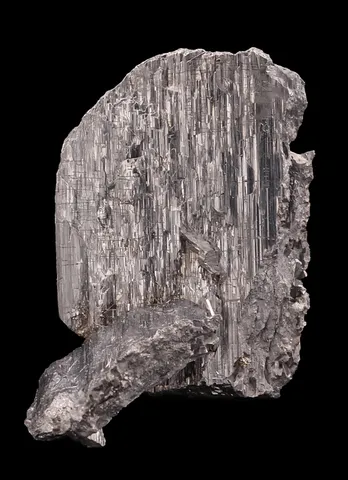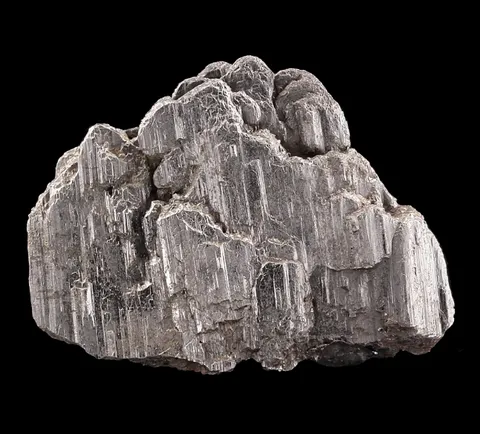ANDORITE
Class : Sulfides and sulfosalts
Subclass : Sulfosalts
Crystal System : Orthorhombic
Chemistry : PbAgSb3S6
Rarity : Very rare
Andorite is a mineral of hydrothermal origin present in polymetallic veins of high and medium temperature. This term was recently renamed (2022): it actually includes two minerals, quatrandorite and senandorite. It is a mineral that owes its name to the Hungarian aristocrat and mineralogist Andor von Semsey. Andorite forms squat prismatic crystals up to 3 cm striated parallel to the elongation according to [001] and larger flattened tabular crystals according to {100}. She has no cleavage. Andorite has a metallic luster, a dark steel gray color fading to yellowish with iridescence. Its chemistry with Pb, Sb, Ag (and often Cu) reflects the presence of many metals in hydrothermal fluids. The procession of accompanying minerals is therefore very large : galena, stibnite, franckeite, pyrargyrite, arsenopyrite, pyrite, etc... It is an accessory ore of silver, mainly on Bolivian deposits.
Andorite in the World
Photos : Andorite from San José Mine, Oruro, Cercado Province, Oruro, Bolivia - © Brian Kosnar - Mineral Classics
Twinning
No twin report for this mineral species.
Fakes and treatments
Hardness : 3.5
Density : 5.35
Fracture : Conchoidal
Trace : Black
TP : Opaque
RI : Not measurable
Birefringence : Not measurable
Optical character : Not measurable
Pleochroism : None
Fluorescence : None
Solubility : Hydrochloric acid
Magnetism : None
Radioactivity : None


